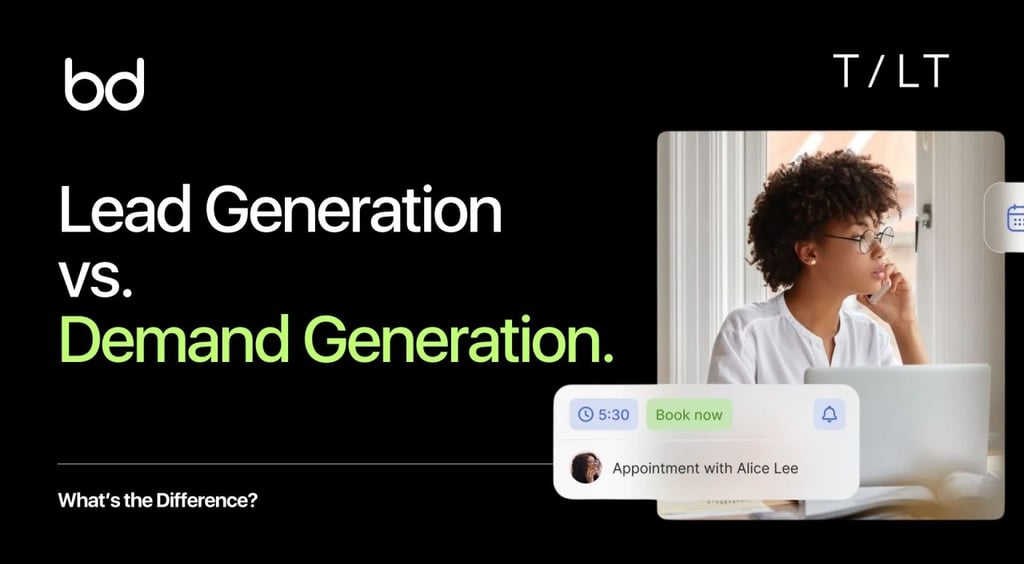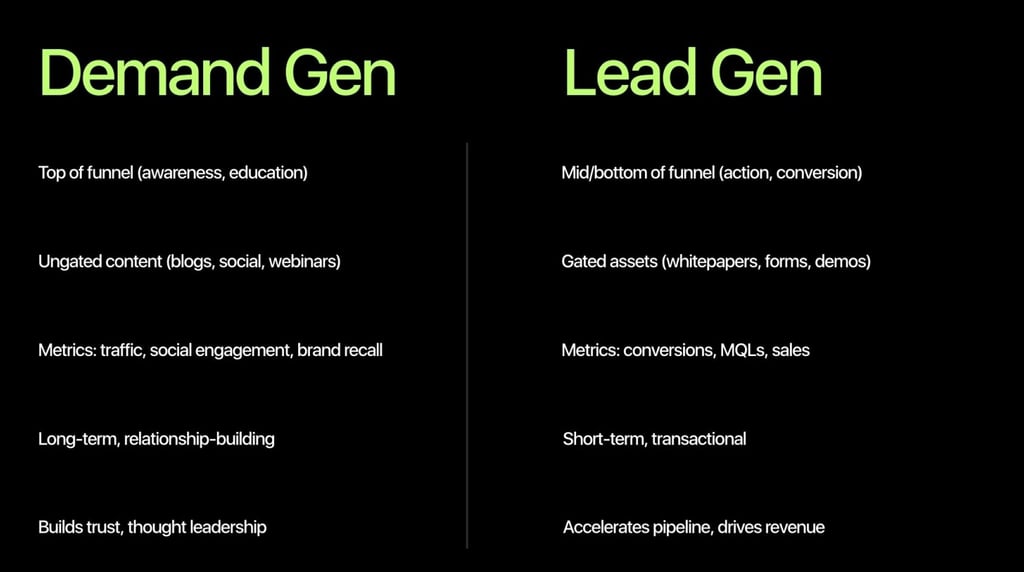Lead Gen vs Demand Generation: What’s the Difference?
For CMOs, founders, and marketers who truly want to scale, understanding the difference is a total mindset shift.
Brand Blinks Global
4 min read


Every ambitious business wants more customers, but how you attract them determines whether you spark growth or stall out.
In 2025’s hyper-competitive landscape, “demand generation” and “lead generation” are tossed around boardrooms, strategy decks, and agency pitches, yet they’re often confused, misused, or blended until their unique strengths are lost.
For CMOs, founders, and marketers who truly want to scale, understanding the difference is a total mindset shift.
Why It Matters: The Cost of Confusion
Data signals a clear warning: 73% of businesses now consider content vital for generating demand, while 50% of marketers name lead gen as their top priority. But only those who balance both see real pipeline velocity, loyalty, and brand impact.
Brands that invest in demand generation strategies see a steady rise in qualified traffic and brand recall, while those focused on lead generation track better conversion rates but risk “vanity metrics” (lots of leads, few buyers).
Demand Generation: Building Curiosity, Not Just Clicks
Demand generation sits patiently at the top of the funnel. It’s about making your brand irresistible to the right audience, before they even think about a purchase.
This approach:
Creates awareness and starts conversations using ungated, educational content (blogs, podcasts, videos, events).
Fosters trust by showing expertise, not just selling features.
Builds long-term relationships with a broad audience, nurturing prospects from “maybe” to “must have.”
Measures success in brand searches, traffic, engagement, and share of voice.
Behind every great demand gen program is a resilient brand strategy and development that defines why you exist, whom you serve, and how to be remembered.
Lead Generation: Turning Interest into Action
Lead generation is the closer, the engine that transforms interest into opportunity.
It:
Offers gated assets and direct calls-to-action (“Download the guide,” “Book a demo”) in exchange for prospects’ contact info.
Relies on landing pages, forms, and nurture automation to qualify leads for sales.
Works in the middle and bottom of the funnel, capturing those ready to engage, buy, and advocate.
Measures ROI via conversion rates, deals closed, and pipeline growth.
Lead generation succeeds when anchored in compelling branding and design that delivers clear value, credibility, and user-friendly experiences.
Key Differences: Side-by-Side
Why You Need Both
Only 29% of organizations report a fully integrated approach between brand and demand marketing, but those who do outperform rivals in revenue, retention, and reputation. Demand gen fills gaps, builds communities, and sets the stage. Lead gen brings home the results if prospects trust your brand.
A robust brand audit clarifies whether your current strategy nurtures demand, attracts quality leads, or falls short at either.
Common Pitfalls
Focusing only on leads: You risk high cost per acquisition, lower loyalty, and wasted ad spend.
Ignoring demand: Your funnel becomes dry. Campaigns feel “pushy,” lacking resonance. Brand affection flatlines.
Mismatched brand identity: Without strategic brand visuals and authentic storytelling, neither approach delivers.
A human-first approach, powered by strategic branding consulting, is what ties the whole ecosystem together.
How to Nail Demand and Lead Gen Together
Start with Strategy: Clarify your mission, positioning, and audience. Bring in brand strategy and development expertise to get the core right.
Educate, Don’t Just Sell: Build demand with open resources, podcasts, and expert videos. Feature authentic stories using powerful content writing and copywriting.
Make the Experience Seamless: Invest in website design and development that delights, guides, and reassures. Forget “just pretty”, make every touchpoint frictionless and trust-building.
Audit and Optimize: Use ux audit tools and insight to spot conversion blockers. Ensure forms, landing pages, and CTAs flow naturally.
Layer Campaigns: Use retargeting and nurturing to bridge the gap between curious visitors and hot leads. Coordinate demand gen efforts with targeted lead gen pushes.
Sector Trends & Stats to Watch
73% of demand gen budgets go to content, blogs, and videos top the list.
Case studies are rated the #1 format for both building demand and converting leads.
Businesses generate an average of 1,877 leads monthly, yet only those that nurture demand see improved close rates and retention.
AI-powered demand generation and ABM strategies are raising engagement, personalisation, and ROI.
57% of marketers will increase ABM/demand gen budgets this year.
68% say social media most boosts lead flow, but engagement hinges on thought leadership and education.
Bottom Line: Smart Brands Balance Demand and Leads
Demand generation sets the stage by building trust, reputation, and long-term engagement. Lead generation brings the audience to action, qualified, ready, and aligned. Success means integrating both, never treating one as optional.
Are you still playing catch-up on either front? It’s time to audit, align, and activate.










© 2025 BRNDXMORPH Media Worldwide Private Limited. All rights reserved
Brand Blinks Global is an independent global brand intelligence x transformation company.
The trademarks, logos, and service marks displayed on this site are the property of their respective owners.
"Brand Blinks Global," "Brand Blinks," "Made for the Uncommon," and the "bd" logo are trademarks or registered trademarks of BRNDXMORPH Media Worldwide Private Limited.
RESOURCES
INTELLIGENCE
BUSINESS
TALENT
COVERAGE
EXPLORE
Made for the Uncommon


When your brand grows, others rise too. 2% of your project empowers a nonprofit we back together every year.


